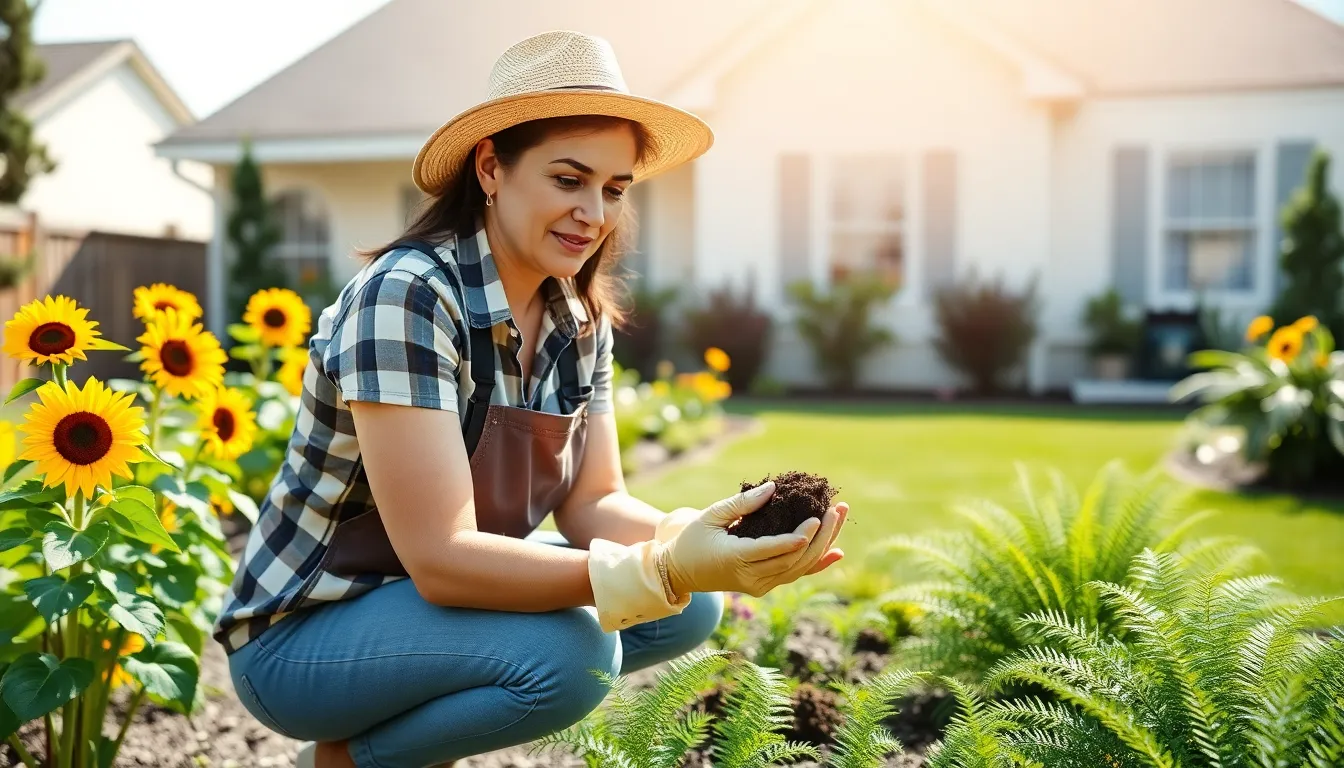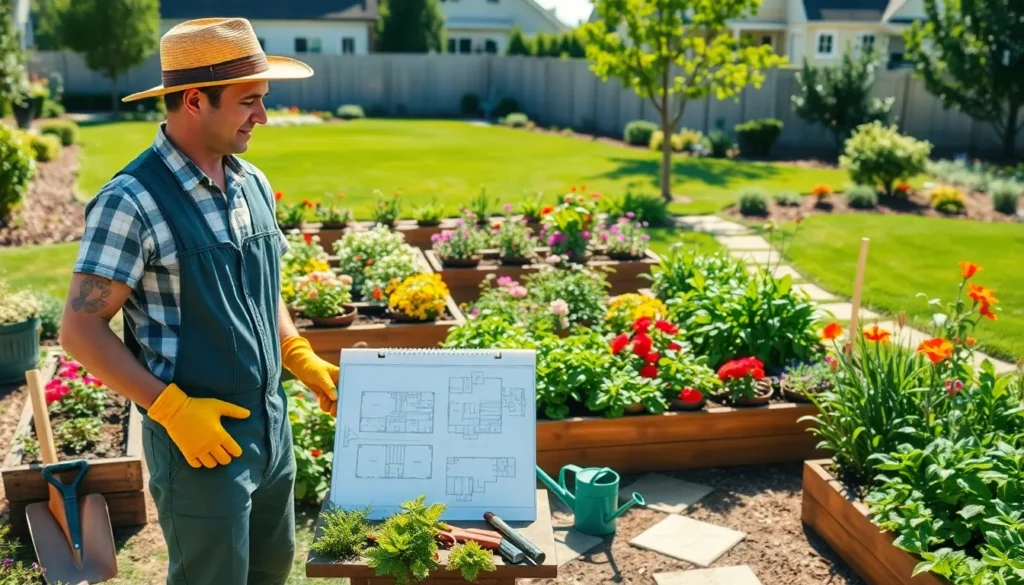Planning a garden isn’t just about digging in the dirt and hoping for the best. It’s more of a delightful negotiation with nature, armed with a shovel, a handful of seeds, and a splash of creativity. Picture this: a lush paradise teeming with blooming flowers, delicious veggies, and aromatic herbs, who wouldn’t want that? Whether it’s a small balcony or a sprawling backyard oasis, the right planning makes all the difference. So, grab that gardening hat and let’s jump into how to transform a patch of earth into your very own Eden.
Table of Contents
ToggleUnderstanding Your Gardening Space

Before you get down and dirty, it’s crucial to understand the territory. Gardening success starts with a solid grasp of the space available.
Assessing Sunlight and Shade Areas
Sunlight is to plants what coffee is to humans, absolutely vital. Observe your garden throughout the day. Some areas bask in continuous sunlight, while others may dwell in deep, cozy shade. Most flowering plants thrive on 6-8 hours of sun, while shade-loving varieties prefer a more mellow sunbath. By assessing these light conditions, you can decide where to plant sunflowers versus ferns, ensuring each plant feels right at home.
Evaluating Soil Quality and Drainage
Next comes the often-overlooked soil. The foundation of your garden is as important as that tasty chocolate layer in a cake. Grab a handful of soil and squeeze it. Is it clumpy? Sandy? Well-drained soil encourages healthy root systems, while compacted soil gets a solid thumbs down. Testing the pH and nutrients can also provide insights into what plants will thrive. If the soil needs a boost, compost or organic matter can work wonders, making it rich and fluffy for your greens.
Determining Garden Layout and Size
Creating a successful layout is akin to designing a home: each plant deserves its own cozy corner. Start by sketching out the garden space. Consider zones for sunflowers and tomatoes but don’t forget to leave pathways for easy access.
How about raised beds? They’re fantastic for controlling soil quality and minimizing weeds. The size depends on what you plan to grow, but raised beds usually span 4 feet wide. This allows for easy harvesting without the need for yoga-like flexibility. Think about vertical gardening solutions as well: climbing plants can save space while also providing an eye-catching display.
Choosing the Right Plants
Choosing plants is where creativity meets practicality. It’s about balancing aesthetics with functionality to create a harmonious space.
Selecting Annuals vs. Perennials
Not all plants are made equal, some come back yearly, others are one-hit wonders. Annuals like petunias bloom beautifully for one season but are relentless in their color show. Perennials, on the other hand, reward patience, returning year after year with minimal fuss. Knowing the difference equips gardeners to make smarter choices, ensuring sustainable beauty.
Incorporating Vegetables and Herbs
Who can say no to a salad plucked right from the garden? Integrating vegetables and herbs provides both beauty and nourishment. Companion planting can also maximize garden health. For instance, pairing tomatoes with basil not only enhances flavor but also repels pests. When choosing herbs, think about culinary uses: fresh rosemary or thyme adds a gourmet touch to any dish.
Creating a Planting Calendar
A planting calendar is a gardener’s best friend. Timing exists for a reason, certain plants shouldn’t be introduced until the danger of frost has passed. Consult local gardening resources to determine the best times to plant various seeds.
Consider sowing seeds indoors before transferring them outside. This strategy can give seedlings a head start on the growing season. By mapping out what goes where and when, gardeners can avoid the dreaded rushed last-minute planting sessions.
Designing Aesthetic Features
A garden isn’t just a collection of plants: it’s an expression of art. Designing aesthetic features can elevate any garden from basic to breathtaking.
Incorporating Paths, Borders, and Additional Elements
Well-placed paths can guide visitors and create a sense of purpose. Whether it’s a winding stone path or a rustic wooden boardwalk, pathways add structure. Borders made from stones or even flowers delineate sections, allowing each area to shine. You may also want to introduce decorative elements such as birdhouses, gazebos, or benches. These features encourage relaxation and provide focal points, turning your garden into a haven.
Planning for Maintenance and Sustainability
Gardening should be enjoyable, not a chore. Planning ahead can save time and effort down the line.
Establishing a Watering Schedule
Watering is crucial, but overwatering can lead to root rot faster than you can say “green thumb.” Establishing a schedule, especially during the growing season, helps keep plants hydrated without drowning them. Consider rain barrels to collect water: it’s both eco-friendly and cost-effective.
Implementing Composting and Mulching Techniques
Finally, use composting for natural fertilizer and mulch to retain moisture in the soil. Both practices reduce waste and promote longevity in the garden. As plants flourish, the routine becomes less of a task and more of a fulfilling ritual.








